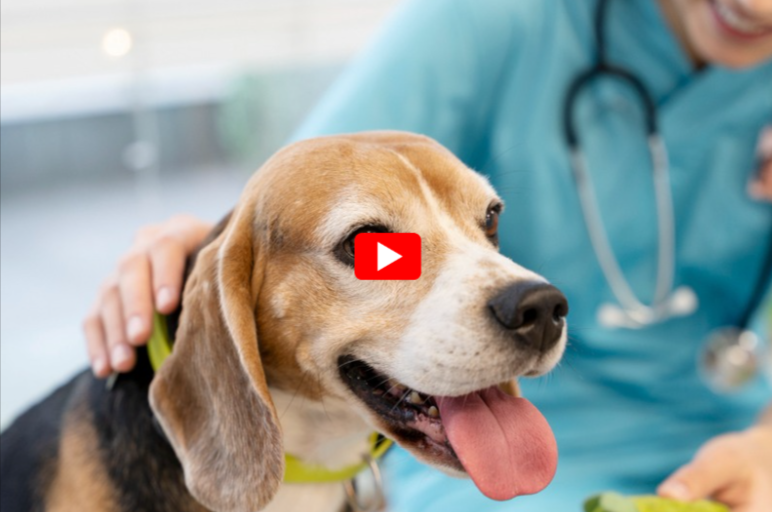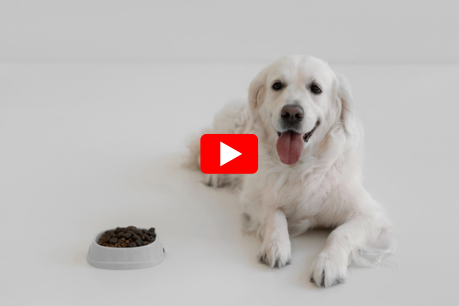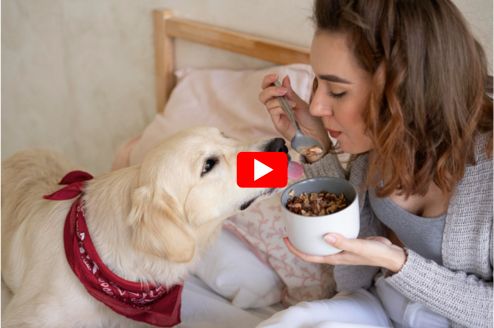How to Help a Constipated Dog Poop Quickly: Vet-Approved Tips
Constipation isn’t just uncomfortable for humans our furry companions can suffer from it too. Watching your dog struggle to poop or seem uneasy is distressing for any pet parent.
To help a constipated dog poop quickly, offer fiber-rich foods, gentle exercise, hydration, and consult a vet if symptoms persist beyond 24 hours.
Fortunately, there are practical, safe, and effective ways to help a constipated dog poop quickly and get them back to their wagging, happy selves.
In this comprehensive guide, we’ll explore the common causes of constipation in dogs, symptoms you should watch for, home remedies, preventive care, and when it’s time to see a vet.
What Is Constipation in Dogs?
Constipation in dogs is a condition where your pet experiences difficulty passing stools or has infrequent, hard, and dry bowel movements.
In mild cases, a dog may skip a day or two without a bowel movement, but in severe cases, it can cause discomfort, lethargy, vomiting, and a lack of appetite.
Signs Your Dog Is Constipated
Before treating constipation, you need to identify it. Here are some telltale signs:
- Straining while trying to defecate
- Hard, dry, or pebble-like stools
- Infrequent or absent bowel movements
- Crying, whimpering, or discomfort when pooping
- Scooting on the ground
- Bloated or tense abdomen
- Loss of appetite
- Lethargy
If your dog shows any of these signs, it’s time to take action.
Common Causes of Constipation in Dogs
Understanding what’s behind your dog’s constipation can help you treat it effectively and prevent it from recurring. Some of the most common culprits include:
- Dehydration: Not drinking enough water leads to dry, hard stools.
- Lack of dietary fiber: Fiber is crucial for healthy digestion and bowel movements.
- Inactivity: Sedentary dogs are more prone to sluggish digestion.
- Ingesting hair, grass, or foreign objects: These can cause intestinal blockages.
- Anal gland issues: Swollen or infected anal glands can make pooping painful.
- Medication side effects: Some drugs, like antihistamines or diuretics, can cause constipation.
- Obesity: Extra weight can physically compress the intestines and slow digestion.
- Age: Older dogs naturally face more digestive problems.
- Medical conditions: Kidney disease, hernias, or neurological issues can cause constipation.
How To Make A Constipated Dog Poop Quickly
If your dog is constipated, you can try these safe, natural remedies at home. But if constipation persists for over 24-48 hours, always consult your veterinarian.
Increase Water Intake
Dehydration is one of the leading causes of constipation. Make sure your dog has constant access to clean, fresh water. You can also:
- Add low-sodium chicken broth to their water.
- Offer ice cubes as treats.
- Mix water into their dry food.
Feed Fiber-Rich Foods
Fiber softens stools and promotes regular bowel movements. Safe options include:
- Canned pumpkin (plain, not pie filling)
- Cooked green beans
- Mashed sweet potatoes
- Canned carrots
- Bran flakes or unsweetened oatmeal
Start with small amounts to avoid diarrhea.
Encourage Exercise
Physical activity stimulates intestinal movement. Take your dog for an extra walk, engage them in a game of fetch, or play indoors if the weather’s poor.
Aim for at least 20-30 minutes of light to moderate exercise to get their bowels moving.
Use a Warm Compress
Applying a warm cloth to your dog’s abdomen can soothe discomfort and help ease bowel movements. Use a clean, damp washcloth warmed to a comfortable temperature and gently massage the stomach area in circular motions.
Check and Empty Anal Glands (If Needed)
Sometimes, full or impacted anal glands cause constipation. If you notice scooting, licking, or swelling near the anus, consult your vet or a professional groomer for safe expression.
Add Healthy Oils
Small amounts of healthy oils can act as natural lubricants for your dog’s intestines:
- Olive oil
- Coconut oil
- Fish oil
Add ½ to 1 teaspoon (based on size) to your dog’s meal.
Gentle Rectal Stimulation
As a last resort and with caution, you can gently stimulate the area around your dog’s anus using a lubricated, gloved finger or a warm, moist cotton ball. This should only be done if other methods fail and with vet guidance.
When To See a Vet
If your dog hasn’t pooped in more than 48 hours or shows severe symptoms like vomiting, extreme lethargy, bloating, or blood in stools, seek immediate veterinary care. It could indicate an intestinal obstruction or a more serious medical condition.
Your vet may perform:
- A physical examination
- Blood tests
- X-rays or ultrasounds
- Manual removal of impacted stools
- Prescription laxatives or enemas (never administer human enemas)
Preventing Constipation in Dogs
Prevention is always better than cure. Here’s how to help your dog avoid constipation in the first place:
- Ensure constant access to fresh water
- Feed a balanced, fiber-rich diet
- Provide daily exercise
- Avoid giving bones or indigestible chew toys
- Regularly groom to prevent hair ingestion
- Schedule routine vet visits for older dogs or those with chronic issues
Final Thoughts
Constipation is a common but uncomfortable issue for dogs, and as a responsible pet owner, you can take simple, effective steps to help your pup feel better fast.
Hydration, fiber, exercise, and close monitoring can usually resolve mild constipation. But when in doubt, always consult your vet for professional guidance.
Keeping your dog’s digestive health in check ensures a happier, healthier life and fewer stressful potty breaks for you both.
📚 References
- Dog Constipation Causes and Treatment
https://www.webmd.com/pets/dogs/dog-constipation-causes-treatment
- What Can I Give My Dog To Ease Occasional Constipation
https://www.petmd.com/dog/general-health/what-give-constipated-dog
- Fast Constipation Relief: Tips and Home Remedies
https://www.healthline.com/health/digestive-health/how-to-make-yourself-poop
.



